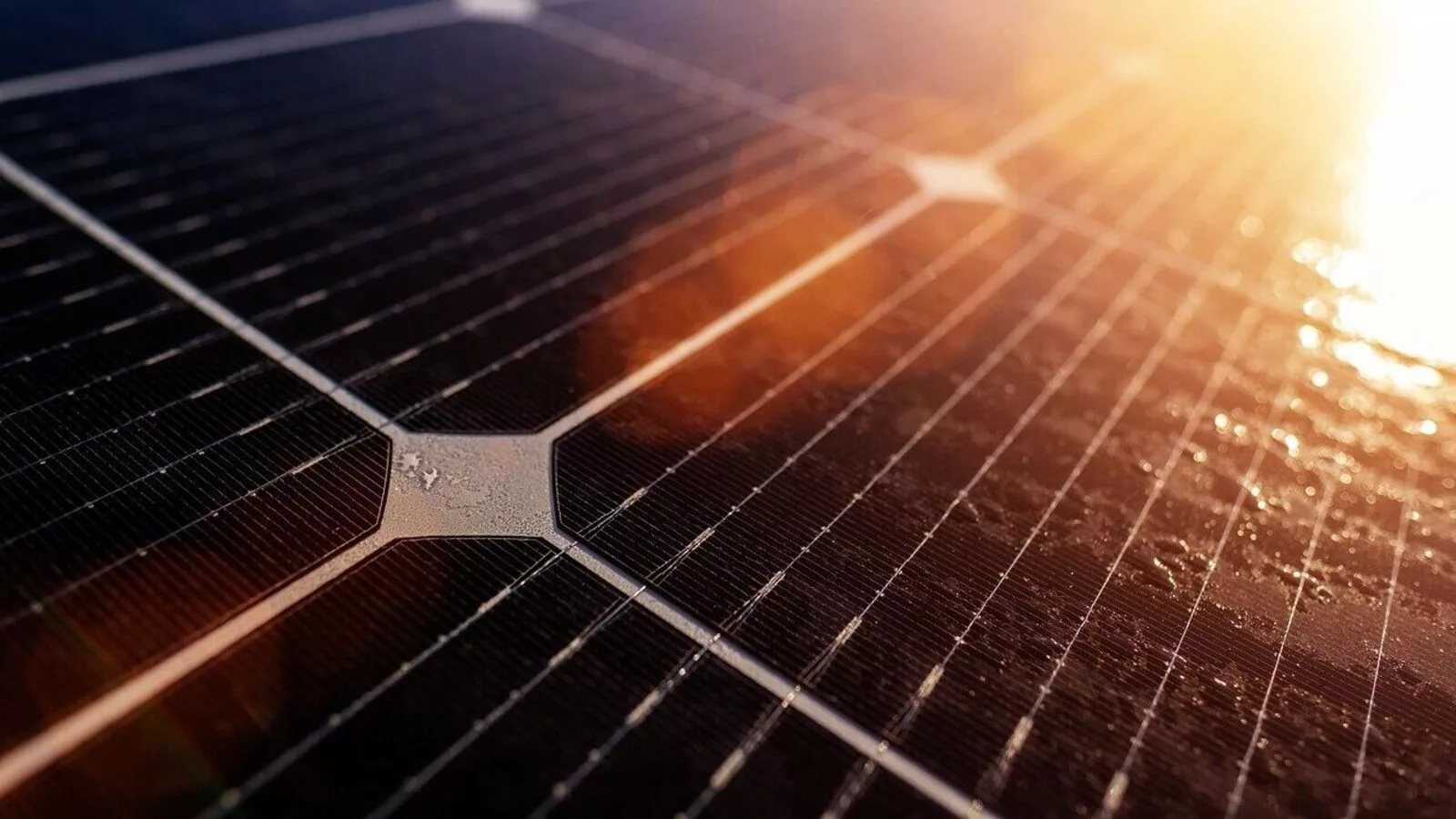This transition is part of a global trend, with renewables expected to drive over 90% of the expansion in global electricity generation by 2025. India has ambitious goals, aiming for net-zero carbon emissions by 2070 and planning to generate 50% of its electricity from renewable sources by 2030.
Driven by governmental initiatives and declining costs of technology, India’s solar energy sector is on the brink of extraordinary growth, projected to reach approximately $238 billion by 2030. Solar photovoltaic (PV) capacity is forecasted to triple by 2027, positioning it as a leading power source worldwide. A shift in global PV supply chains, from China to India, encouraged by new policies in both India and the US, is expected to attract significant investments in solar manufacturing.
This burgeoning sector is drawing substantial investments, transforming both domestic manufacturing and international supply chains.
Against this backdrop, we explore the dynamics of this booming industry by comparing two prominent entities: Websol Energy and Insolation Energy.
Table of Contents
Background
Websol Energy
A frontrunner in manufacturing photovoltaic monocrystalline solar cells and modules, Websol Energy has carved a niche as a fully export-oriented unit, primarily serving markets in Europe and the US. With over twenty years of experience, it is celebrated for its superior quality products, offering a diverse range from 5 watts (W) to 220W, addressing the needs of residential, commercial, and industrial sectors.
In 2022, Websol initiated a significant transformation by upgrading its machinery and entire gross block with advanced solar cell technology, specifically Monocrystalline Passivated Emitter Rear Cell (Mono PERC cells) technology. This strategic move is aimed at boosting efficiency and product quality. With these upgrades, Websol plans to significantly enhance its solar energy capacity and solar module capacity by early 2024.
Insolation Energy
Positioning itself as a holistic provider for solar solutions, Insolation Energy offers high-efficiency solar panels, batteries, and PC offerings, alongside comprehensive engineering, procurement, and commissioning (EPC) and original equipment manufacturing (OEM) services. Utilizing both polycrystalline and Mono-PERC crystalline cell technologies, it currently operates at a manufacturing capacity of 700 megawatts (MW), with plans to increase this to 1200 MW.
Revenue growth
View Full Image
Insolation Energy has demonstrated remarkable growth, with a five-year compounded annual growth rate (CAGR) of 38% in revenue.
In contrast, Websol Energy’s revenue has declined, attributed to a plant shutdown for asset upgrades. However, excluding 2023, Websol’s revenue has more than doubled between 2019 and 2023. The company’s strong relationships with customers have been instrumental in generating recurring orders, with over 45% of clientele having been associated with Websol for over five years.
Before the planned shutdown, Websol was operating at a capacity of 250 MW, with plans to expand it by 8 times over the next one to two years.
Insolation Energy’s revenue surge is driven by significant capacity expansion and a strong brand reputation built over the years. Beginning with a manufacturing capacity of 50 MW in 2017, Insolation Energy has now reached 250 MW and is set to quadruple to 1000 MW in 2024.
Profitability
Ebitda (earnings before interest, tax, depreciation and amortization) margin, a critical profitability indicator, reflects a company’s operating profits as a percentage of its total revenues. It reveals the company’s earning capability from each rupee of sales before interest and taxes are considered.

View Full Image
In 2023, Websol’s operating margins were affected by a halt in operations. Historically, its margins have fluctuated due to market competition and declining prices per watt peak (Wp). Although Insolation Energy’s margins have been more consistent, they remain lower than Websol’s, with material costs accounting for a significant portion of its sales, unlike Websol Energy.
Insolation Energy’s material cost as a percentage of sales, standing at 82% and 84% in financial years 2022 and 2023 respectively, has been significantly higher than that of Websol Energy, which were 60% and 69% in financial years 2021 and 2022, respectively. This discrepancy explains the disparity in margins between the two companies.
Expansion plans
Both Websol Energy and Insolation Energy are embarking on significant expansion ventures.
Insolation Energy is preparing for a substantial increase in its solar power production. By 2024, the company aims to boost its capacity by 250MW, using advanced G2G technology to achieve 1,000MW in total capacity and targeting revenues of ₹6.3 billion. Its ambitions extend to a 1,200MW capacity by 2025, with a revenue goal of ₹10 billion, and a 600MW solar cell line addition.
By 2026, Insolation Energy aspires to a colossal 2,000MW capacity, with revenue projections of ₹20 billion and sales of 1,000MW, supplemented by an additional 1,000MW from its cell unit.
Websol Energy is undergoing a major upgrade, aiming to more than double its production capacity from 250 MW to 500 MW in the first phase, along with a near-equivalent increase in solar module production. This expansion not only enhances capacity but also broadens Websol’s product range to include complete solar modules.
Websol Energy is planning further expansion, beyond increasing its solar cell and module capacity by 600 MW and 550 MW, respectively. The proceeds from this phase will fund a second phase of development at a new manufacturing site, expected to be three times larger than the first phase.
Debt to Equity
This ratio measures the level of debt a company takes on to finance its operations or expansion, against the level of equity that is available.
Generally, a favoourable debt-to-equity ratio is less than 1.0, while a risky debt-to-equity ratio is higher than 2.0.

View Full Image
While Websol Energy enjoys a relatively low debt-equity, Insolation Energy has borrowed money to fund its massive expansion in the past decade. However, the company has been repaid a large part of its since its listing in 2022.
Dividend
The dividend is the income an investor can make from stocks, other than the appreciation in the value of the share.
Owing to the capital-intensive nature of the business, both companies do not distribute dividends to its investors.
Return on capital employed (RoCE)
Return on capital employed is one of the most meaningful indicators of a company’s profitability and efficiency.
An excellent tool for analyzing returns of a capital-intensive industry like cement, it tells you the kind of money a company can generate on the total capital invested (shareholders equity plus borrowed money).

View Full Image
While Websol Energy’s returns have been volatile, in line with its margins, Insolation’s returns have been stronger and steadier.
Valuation
The most common and effective ratios for comparative analysis and valuation are the Price to Earnings (PE) and Price to book (PB) value ratios.
While the PE ratio uses the company’s earnings to determine the value a shareholder assigns against one rupee of earnings; the PB ratio uses a company’s book value to determine the same.

View Full Image
The PE and PB ratios for Websol Energy are at 58.9x and 9.5x, respectively. For the last 5 years, the average is 10.9x and 1.5x, respectively.
For Insolation Energy, the PE and PB stood at 170x and 52.9x, respectively. Since its listing in November 2023, the average is 31.3x and 22.3x, respectively.
Websol Energy and Insolation Energy, both are trading at a strong premium to their historical average, indicating the stocks might be overvalued at the moment.
Bright Prospects
The excitement around solar companies has been significant, especially after Prime Minister Narendra Modi announced a new initiative to power 10 million households with solar energy. Government support through policy reforms and financial incentives is bolstering the industry.
A notable ₹195 billion has been allocated for the production-linked incentive (PLI) scheme, aimed at enhancing high-efficiency solar module manufacturing. This initiative is part of a broader effort to boost domestic production and position India as a key player in the global solar market.
With the first phase of the PLI scheme already enhancing integrated capacity by 8,737 MW, and the second phase promising an additional 39,600 MW from 11 companies, the sector is set for substantial growth. This ₹930 billion boost is expected to generate over 100,000 jobs, directly and indirectly.
The Solar Park Scheme, aiming to establish over 50 solar parks with a combined capacity of around 38 GW by 2025-26, will further drive down costs and promote solar energy adoption.
While China currently dominates the solar PV module supply chain, even a modest shift of 10% away from China could significantly benefit India. Government initiatives, including the PLI scheme and the ‘Make in India’ drive, are curbing imports from China and fostering domestic manufacturing.
Indian module manufacturers are witnessing a surge in export demand, especially from the US, thanks to restrictive measures against Chinese products. This trend is expected to continue, underscoring the sector’s growth potential.
Websol Energy or Insolation Energy: Which is better?
Insolation Energy currently holds the upper hand against Websol Energy across several key parameters. Their financial performance indicates stronger revenue growth and higher operating margins, suggesting greater operational efficiency.
While both companies have reported ambitious growth plans going forward, Insolation’s have been more pronounced. Both maintain healthy balance sheets, positioning them well to capitalize on the industry’s growth.
However, the recent run-up in the stock prices of Insolation Energy Websol indicates investors have already factored in the bright prospects.
Disclaimer: This article is for information purposes only. It is not a stock recommendation and should not be treated as such.
This article is syndicated from Equitymaster.com
Reference :
Reference link





















+ There are no comments
Add yours